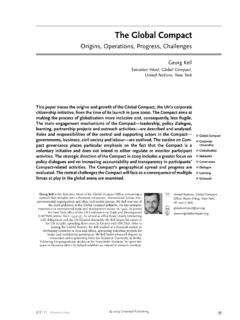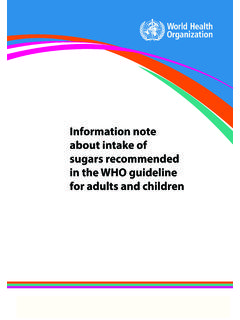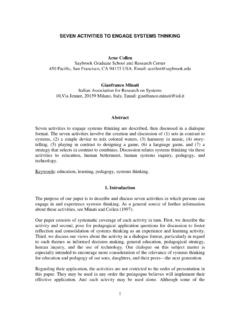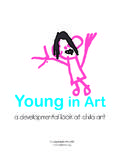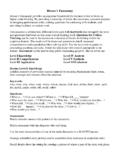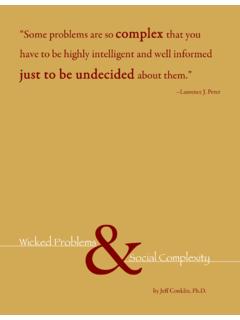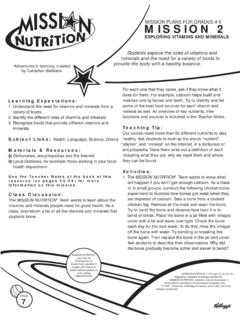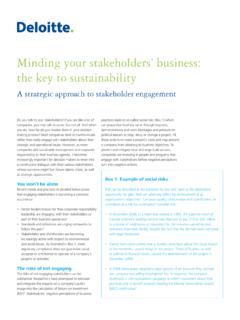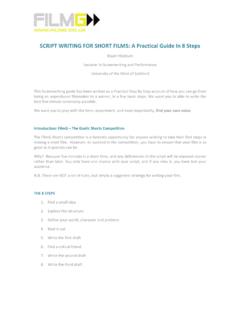Transcription of Level Descriptors for Writing - GM SEN
1 Level Descriptors for Writing Name: _____ Date of first assessment: _____ Highlight criteria that are evident in the sample of Writing . Highlight box above in same colour, and date. EYFS LINKING SOUNDS AND LETTERS Writing HANDWRITING 22 - 36 months - Distinguish between the different marks they make. - Begin to show some control in their use of tools and equipment. 30 - 50 months - Sometimes give meaning to marks as they draw and paint. - Ascribe meaning to marks that they see in different places. - Draw lines and circles using gross motor movements. 40 60 months - Hear and say the initial sound in words and know which letters represent some of the sounds. - Begin to break the flow of speech into words. - Use Writing as a means of recording and communicating. - Begin to use anticlockwise movement and retrace vertical lines. - Begin to form recognisable letters. Early Learning Goals - Hear and say sounds in words in the order in which they occur.
2 - Link sounds to letters, naming and sounding the letters of the alphabet. - Use their phonic knowledge to write simple regular words and make phonetically plausible attempts at more complex words. - Use their phonic knowledge to write simple regular words and make phonetically plausible attempts at more complex words. - Attempt Writing for different purposes, using features of different forms such as lists, stories and instructions. - Write their own names and other things such as labels and captions, and begin to form simple sentences, sometimes using punctuation. - Use a pencil and hold it effectively to form recognisable letters, most of which are correctly formed. Lev SENTENCE STRUCTURE AND PUNCTUATION TEXT STRUCTURE AND ORGANISATION COMPOSITION AND EFFECT SPELLING HANDWRITING 1 Pupils' Writing communicates meaning through simple words and phrases. In their reading or their Writing , pupils begin to show awareness of how full stops are used.
3 Letters are usually clearly shaped and correctly orientated. 1C - Simple words and phrases are written. - Begin to be aware of how full stops are used in Writing or reading. - Punctuation may be used to mark the end of a line rather than a sentence. - Writing may need to be mediated to be understood. - Writing is orientated correctly, (top to bottom, left to right). - Begin to write in different forms; lists, captions, simple stories. - Recognisable letters and simple words and phrases are used to convey meaning - Produce ideas. - Can segment adjacent consonants in words and apply this in spelling. - Letters have clear shape and orientation. 1B - Can compose a sentence orally and attempt to replicate it in Writing . - Some use of capital letters. - Writing begins to how an awareness of how full stops are used. - Some ideas may be linked by and . - Writing can generally be read without mediation.
4 - Simple beginning, middle and end are becoming apparent. - Begin to use story language. - There may be some interesting and appropriate vocabulary linked to the context. - Begin to use alternative ways of spelling phonemes, that the /ae/ sound can be spelt with ai , ay or a-e . - Know some words contain which spelling alternatives - Write most letters, correctly formed. Spacing may be irregular 1A - Can write a simple sentence that makes sense. - Uses full stops and capital letters more consistently. - Ideas are sequenced appropriately, with a beginning, middle and an end or instructions in the correct order. - Writing can be read without mediation. - Information labelled appropriately. - Pupils use appropriate vocabulary, making choices between alternatives supplied, word banks. - Recognise and use alternative ways of spelling the phonemes. - Know words contain which spelling alternatives - Write most letters, correctly formed and orientated.
5 - Write with spaces between words accurately 2 Pupils' Writing communicates meaning in both narrative and non narrative forms, using appropriate and interesting vocabulary, and showing some awareness of the reader. Ideas are developed in a sequence of sentences, sometimes demarcated by capital letters and full stops. Simple, monosyllabic words are usually spelt correctly, and where there are inaccuracies the alternative is phonetically plausible. In handwriting, letters are accurately formed and consistent in size. 2C - Simple and compound sentences are used. - Some sentences demarcated with capital letters and full stops. - Some evidence of the use of other punctuation. - Writing begins to show characteristics of chosen form based on the structure of known texts. - Write chronological and non-chronological texts using simple structures. - Consider and select from alternative word choices related to the subject matter.
6 - Words chosen for effect. - Recognise and use alternative ways of spelling the phonemes. - Know words contain which spelling alternatives - Write with spaces between words accurately 2B - Uses a range of connectives to make a compound sentence and, but because. - Full stops and capital letters and questions marks are used more consistently. - Organisation reflects the purpose of the Writing , Instructions. - Some use of basic layout conventions are used. - Use connectives that signal time, then, after, before, meanwhile. - Variation in word choices, some of which is ambitious. - Detail is used to engage the reader. - Spell with increasing accuracy and confidence, drawing on word recognition and knowledge of word structure, and spelling patterns - Write legibly, using upper and lower case letters appropriately within words, and observing - correct spacing within and between words 2A - Begins to use subordination, If, so, while, though and since.
7 - Use of question marks, and commas to separate items in a list. - Use appropriate language and structures for the text-form. - Pupils start to show awareness of paragraphs. - Appropriate presentational features selected to suit particular Writing purpose on paper and on screen. - Sustain form in narrative, including use of person and time. - Make adventurous word and language choices appropriate to the style and purpose of the text. - Know how to tackle unfamiliar words that are not completely de-codable - Form and use the four basic handwriting joins 3 Pupils' Writing is often organised, imaginative and clear. The main features of different forms of Writing are used appropriately, beginning to be adapted to different readers. Sequences of sentences extend ideas logically and words are chosen for variety and interest. The basic grammatical structure of sentences is usually correct.
8 Spelling is usually accurate, including that of common, polysyllabic words. Punctuation to mark sentences full stops, capital letters and question marks is used accurately. Handwriting is joined and legible. 3C - Writing is generally composed in effective sentences which are grammatically correct. - Uses a range of connectives to signal time, first, next, then, after a while, eventually; cause/reason, because, so. - Adds detail through noun phrases, golden coins; and adverbs, glistening brightly. - Speech and exclamation marks attempted if appropriate. - In narrative, the main features of story structure are used to organise events beginning, middle and end. - Story may not be balanced eg. long opening or events not developed - Endings may not bring story to a conclusion - In non-narrative, some basic layout features may be used. - There are some links between ideas but these may not be clear - Pupil starts to group related material into paragraphs.
9 - Use a range of verbs and adjectives for impact. - Select nouns to be specific, poodle rather than dog. - Use terminology appropriate to text-type. - Attempts to engage reader through detail or word choices. - Can attempt familiar words using a range of strategies. - High and medium frequency words are spelt correctly. - Prefixes and suffixes are spelt correctly when used. - Write with consistency in the size and proportion of letters and spacing within and between words, using the correct formation of handwriting joins. 3B - Writing is composed in effective sentences, grammatically correct. - Varied sentence structure used to clarify meaning; point of view; reflect text-form. - Accurate use of sentence punctuation. - Begins to use commas to mark clauses. - Uses apostrophe for possession. - Speech and exclamation marks used accurately - In narrative, pupils use beginning, middle and end in which events are sequenced logically and the main conflict is resolved.
10 - The story is balanced and there is an attempt to create pace - In non narrative, the layout attempts to organise key elements. - Related material is grouped into paragraphs - Connectives are used to create cohesion between paragraphs - Select and use a range of technical and descriptive language. - Vary the use of verbs and adjectives to achieve impact. - Adverbs are used to add detail to actions. - The beginnings of a conscious written style are evident, directly addressing the reader. - Can spell common homophone. - Can apply common spelling rules. - Can use a range of strategies to attempt new and irregular word. - Write with consistency in the size and proportion of letters and spacing within and between words, using the correct formation of handwriting joins. 3A - Attempts to manipulate sentences for effect using a variety of appropriate structures. - Tense mostly accurate. - Use of first or third person is mostly consistent.



